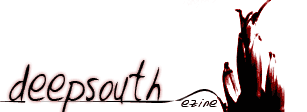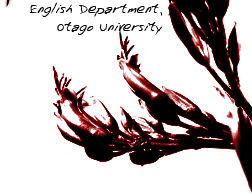As the body matures, multiplicity supercedes unity and the onset of individual sensory awareness is ecstatically conveyed as a synaesthetic revelation:
And the four winds, that had long blown as one,
Shone in my ears the light of sound,
Called in my eyes the sound of light.
Yet Thomas does not always rely on the implicit dualism of birth and death to convey the reality of the latter. For instance, in ‘A Grief Ago’, the “she” of the poem appears to be less an individual protagonist than nature itself taken as an immanent female principle. The very ambiguity of the personification avoids the potential staleness of the figure, and it is used to wonderful effect in the last stanza where death is figured as night: the dissolution of death is depicted as the breath of nature, that which also gives “her” life, with the image of the breath implying the immanent universality of death:
The night is near,
A nitric shape that leaps her, time and acid;
I tell her this: before the suncock cast
Her bone to fire,
Let her inhale her dead, through seed and solid
Draw in their seas…
The reinvigoration of such a typical Romantic trope is more than the clever renewal of a cliché; rather, it exemplifies the basic epistemological premise of Thomas’s work. He expressed this key concept in his early correspondence with Pamela Hansford Johnson, as paraphrased by Moynihan: “Thomas stressed that all ideas and actions began in the body….the best way to render a thought or action…was to express it in as physical a way as possible. Every thought, for him, could find an equivalent in blood, flesh, or gland. He saw it as his particular task to find and express all the equations between body and world, between body and idea”(2). Yet this fundamental sensualism never revels in the irrational; emotion and intuition are always shaped by an acute critical intelligence. Thomas himself emphasised the role of the intellect in explicating the processes of his imagination: “I let…an image be “made” emotionally in me and then apply to it what intellectual and critical forces I possess”(3). Indeed, despite his embrace of the Keatsian notion that all human truth must derive from the pulse, the occasionally excessive denseness of Thomas’s verse is more a symptom of a classical impulse than a romantic one. Association is piled on association until lines groan under the halt of the pressure, like Joyce punning in four (or more) languages simultaneously in Finnegan's Wake.
The poem ‘Light Breaks Where No Sun Shines’ compares the creation of the universe to the making of a body in the womb:
Dawn breaks behind the eyes;
From poles of skull and toe the windy blood
Slides like a sea;
…
When logics die
The secret of the soil grows through the eye,
And blood jumps in the sun;
Calling such a figure a comparison does no justice to the way Thomas uses metaphor in its fullest sense, demanding that we exercise our imagination so that microcosm is not merely related to macrocosm but in some way is the macrocosm. Thomas, as in much religious language, pushes metaphors to the almost mystical limit of complete identification of an object with another. This is far from the classical Aristotelian view, which views metaphors merely as glorified similes, that is, fundamentally agents of comparison. Indeed, Thomas in general makes scant use of simile, preferring the totalizing potency of metaphor. It is a figure in complete agreement with his naturalistic pantheism: if all is one then every thing literally is everything else, making metaphor integral to any verbal depiction of the universe, and indispensable to the attainment of an epic perspective within the confines of lyric verse by the expansion of the lyric ‘I’. The tension established between microcosm and macrocosm is reminiscent of the Metaphysical poets, and although Thomas employs such techniques to more epic ends than Donne for instance, the intellectual compression of ideas is similar. The poem ‘In The Beginning’ uses the same potent, immanent metaphor:
In the beginning was the three-pointed star,
One smile of light across the empty face;
One bough of bone across the rooting air,
The substance forked that marrowed the first sun;
In these four lines Thomas’s intellectual and emotional power is palpable: the first piercing of the void by light is (compared to) a smile; the primordial infrastructure of the cosmos is (compared to) a bone; the making of the “first sun” is described by the very corporal verb “marrowed”, and its creation seems akin to the cell-division of an animal (“forked”); lastly, “forked” is perhaps a bawdy pun upon the act of procreation, an incarnation of the sacred in the profane that occurs throughout his work. This commingling of the sacral and sexuality is also characteristic of Donne, and indeed Thomas must have been influenced to some degree by Donne, since the title of one of his books, ‘Deaths and Entrances’, derives from Donne’s sermon Deaths Duell. The difference is that in Donne complex metaphors in the form of conceits are ludically evoked in the ultimate service of expressing the emotion of the lyric subject through their intellectual prestidigitation. Thomas, on the other hand, insisted that his verse be read literally: the metaphor, with all its intellectual and emotional ramifications, is itself the point, bursting the particular ‘I’ into epic immanence.
(2) Moynihan, p.48. The correspondence comprises some 200 pages from 1933 to 1934.
(3) Quoted by Moynihan, p.100.
page 1 2 3 4

